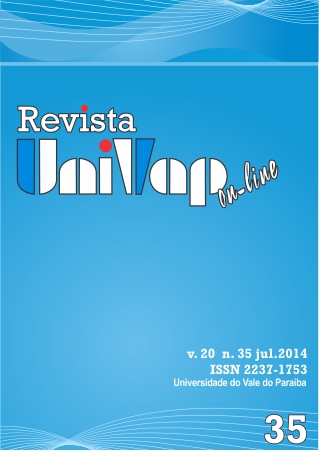CHEMICALS COMPOUNDS EMITTED BY COMMERCIAL PLANTATION AND THEIR RELATIONSHIP WITH THE LOCAL TROPOSPHERIC CHEMISTRY
DOI:
https://doi.org/10.18066/revunivap.v20i35.174Palavras-chave:
Eucalipto, isopreno, ozônio.Resumo
Eucalyptus stands are among the most commonly used species for reforestation in the “Vale do Paraíba”. The objective of this study was to detect for the first time isoprene emission by commercial plantations of eucalyptus and relate it to the local tropospheric ozone, thus evaluating the environmental impact of these forests. The samples were collected from denuders of Air Toxics analyzed by gas chromatography through thermal desorption. Ozone was monitored by UV Photometric O3 Analyzer Model 49i. There were two field trials: one in the summer of 2010 and another in the winter of 2011, in the city of Caçapava, São Paulo state. At midday, the highest mixing ratios were detected of isoprene, ranging from a maximum of 8.3 ppbv on November 29, 2010 to 3.5 ppbv on June 30, 2011. Also at midday, the air temperature and photosynthetic active radiation were higher: 33.7°C and 2243 µmol s-1 and 18 ºC and 387 µmol s-1, respectively. The decrease observed in winter weather parameters directly influence isoprene emission which was 65% lower than in weeks of the summer study. The ozone introduced a maximum delayed peak about two hours later than a maximum of isoprene, which is justifiable due to the time required for this gas to react with other precursors and ozone forms. Considering the maximum detected ozone (27.9 ppbv), the atmosphere in this region is considered clean in accordance with the CONAMA.
Downloads
Downloads
Publicado
Como Citar
Edição
Seção
Licença

Esse trabalho está licenciado com uma Licença Creative Commons Atribuição 4.0 Internacional.
Esta licença permite que outros distribuam, remixem, adaptem e criem a partir do seu trabalho, mesmo para fins comerciais, desde que lhe atribuam o devido crédito pela criação original.
http://creativecommons.org/licenses/by/4.0/legalcode


